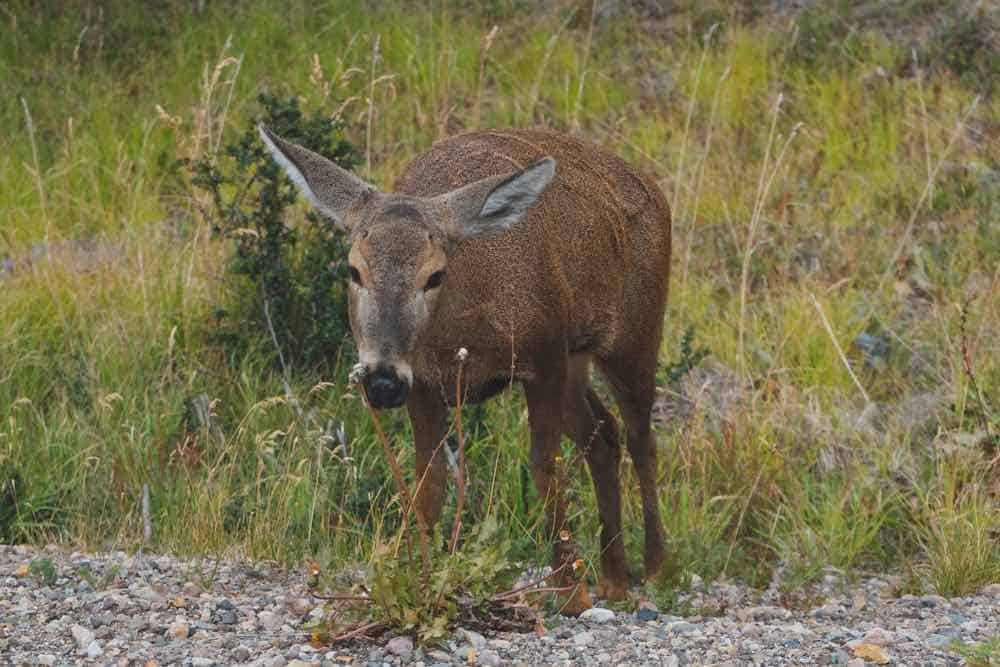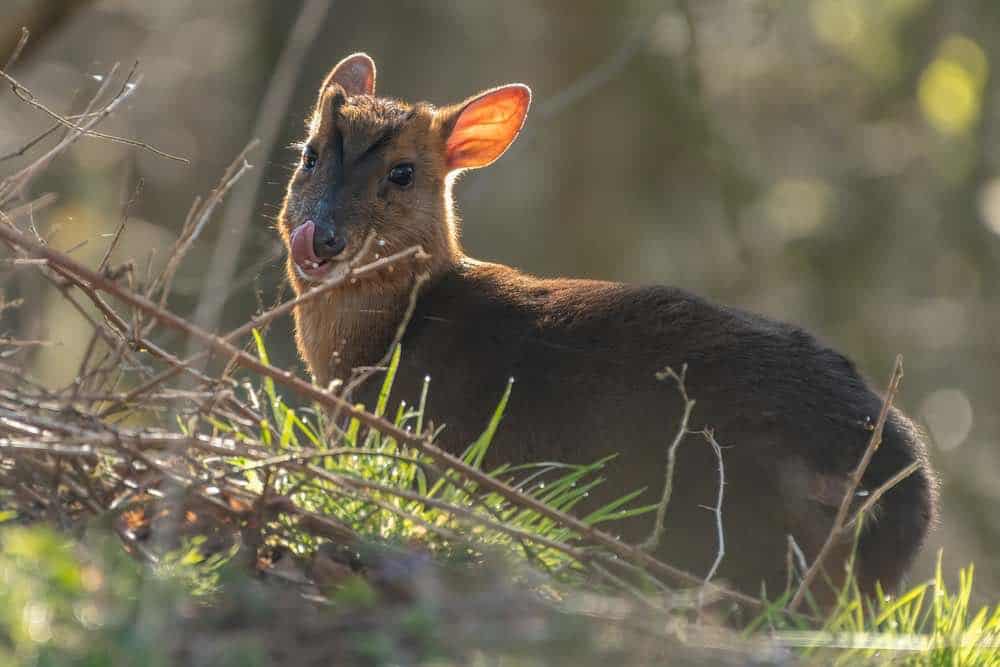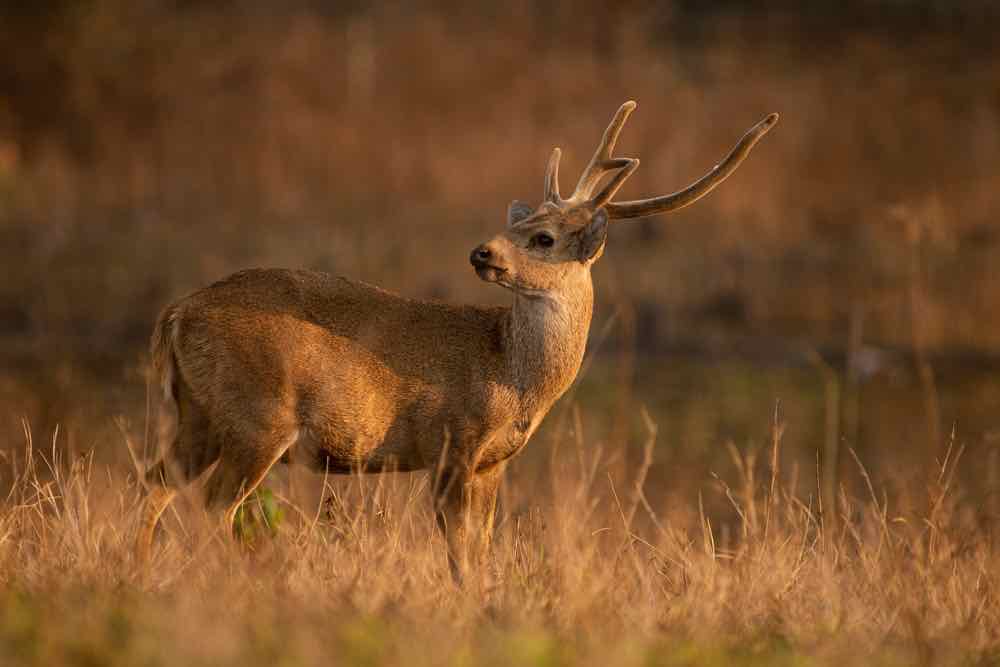If you’re looking for the ultimate guide on the Eld’s Deer, look no further. Below, you’ll find everything you ever wanted to know about the unique, antlered species.
Whether you’re searching for the deer’s origin, or concerned about its endangerment status, you’ll find the answers below. Keep reading to learn everything about the Eld’s Deer.
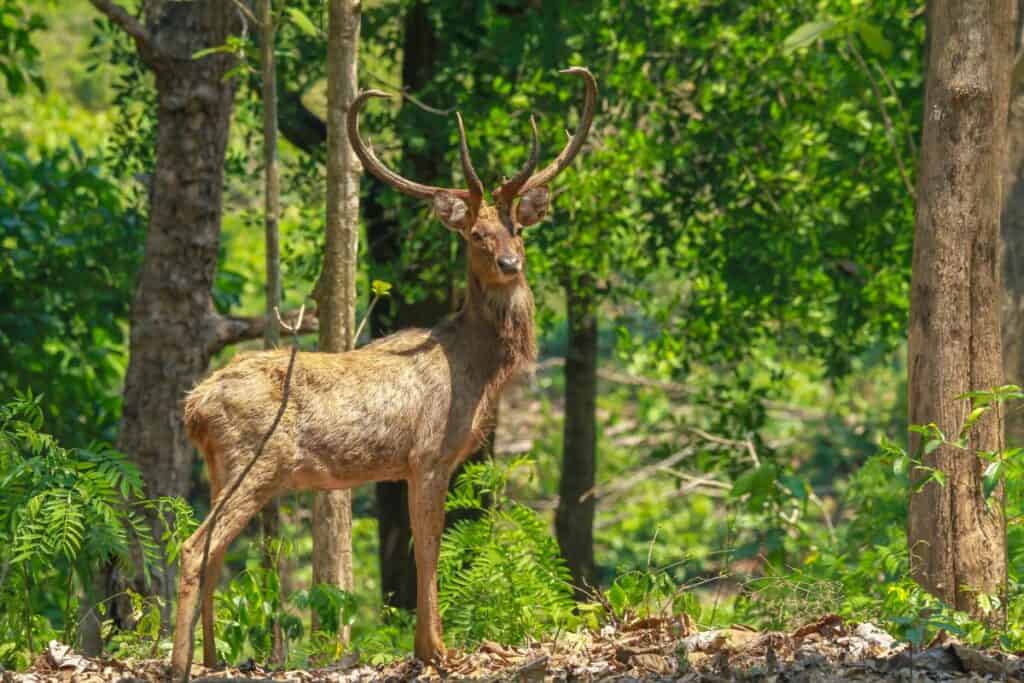
Alternative Names of the Eld’s Deer
You might be surprised to learn that the unique species goes by 3 different names. In addition to the name we’ve already covered in this article, the species also goes by Thamin or Brow-Antlered Deer.
Origins of the Eld’s Deer
If you’re curious about the unique deer species’ roots, you can look to Southeast Asia for its origins; the regal deer were first discovered in Northeast India around the mid-19th century.
Since then, the species has migrated to neighboring countries including Cambodia, China, Thailand, and Vietnam. These days you can commonly find the deer roaming around small pockets of Laos, India, and Cambodia.
Eld’s Deer Physical Traits
Now that we’ve discussed the origins of the unique species, let’s examine some of the physical attributes that set it apart from other deer.
A Statuesque Physique
One of the first things you might notice about the unique species is its graceful posture. You’ll find that the deer has very long legs that are slim in circumference. The elongated body, thin neck, and tall antlers all add to the regal look.
If you happen to catch a glimpse of a male deer in the wild, you might be surprised by its insurmountable size. Each deer can grow up to 70 inches, but the impressive antlers make them seem even taller.
Unique Antlers
Each pair of antlers usually grows to around 40 inches in height and tends to grow outwards rather than upwards. You might notice the distinctive curve of the antlers which elongates gracefully from the top of the tines.
The most impressive feature of the deer has to be the brow antlers, which branch out towards the front of the head.
These brow tines are so long and impressive, that they helped inspire the alternative name of the species, the Brow-Antlered Deer.
A Color-Changing Coat
Another unique feature of the Eld’s Deer is the dense coat that changes with the seasons. If you saw the deer during the summer months, you would spot a striking reddish-brownish coat. During the winter, you would notice that the coat turns to a darker brown due to the lack of sun.
Eld’s Deer Habitat
If you were to observe the Eld’s Deer in its natural habitat over a long period of time, you would notice a few key activities unique to the species.
Preference Towards Forested Areas
You would typically find the species lurking around dry, open forests susceptible to monsoon rains. If there isn’t a dry forest to live in, the Eld’s Deer can also make a home in grasslands and savannahs. You might occasionally come across the deer species roaming around the wetlands, but not near a coastal area.
A Nocturnal Species
The Eld’s Deer stays fairly active most of the time and spends little downtime. The only exception is during the middle of the day when the deer seeks shelter from the harsh rays of the sun.
Rather than sleeping at night, the Eld’s Deer spend their PM hours roaming around forests and grasslands foraging for food.
Migration Patterns
If you were to track the Eld’s Deer migration, you would notice that they tend to follow sources of nourishment. During the dry seasons, the deer species will travel to find a source of water. In the growing season, they’ll scour different terrains in search of food.
The Eld’s Deer particularly hits the jackpot when they come across a field that was seasonally burned. This ensures a vast food supply of fresh grass to sustain the deer for a while.
These migrations tend to be short in duration, only lasting a season before they return to home base.
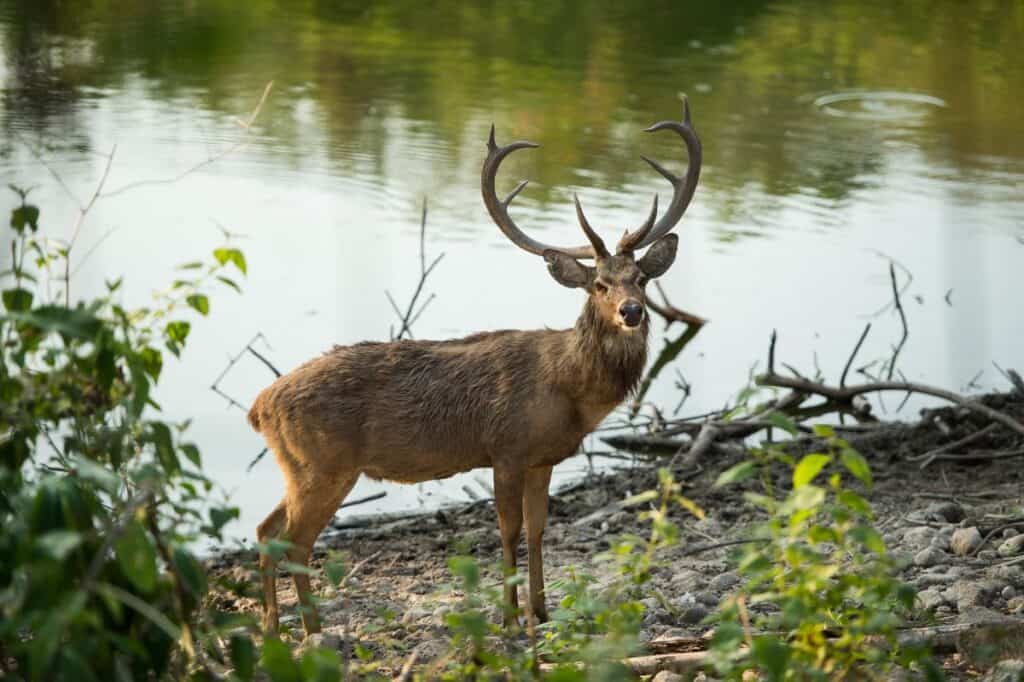
A True Locavore
Since the deer species tend to only have short migrations, the average size of territory ranges from 1 to 8 square miles.
Breeding Practices
If you catch sight of an Eld’s Deer in the wild, you would probably find her alone or with her young. The only exception is during mating season when female deer and their young gather in large herds.
The same rules apply to male deer as well, except during mating season they compete with other males to take control over a herd. If they win, not only do they gain control over the pack but they also get to mate with the herd.
Gestation Period
If you wondering what humans and Eld’s Deer share in common, it’s the gestation period. Both species have to bear the brunt of carrying offspring for 9 months. After the lengthy pregnancy period, most Eld’s Deer give birth to a single calf usually between October and December.
If you happen to see a baby calf, you might notice the bright white spots lining the coat. These eventually fade away as the young deer matures, replaced by thick coarse fur.
Unlike humans, young calves are weaned off their mothers at just 7 months and are full-grown at 18 months. At this point, they are considered to be sexually mature and can start the cycle of reproduction again.
Lifespan
You might be wondering what the lifespan is of this impressive deer. Like most animal species, the Eld’s Deer tend to live longer in captivity than in the wild.
The average lifespan of a male Eld’s Deer living in captivity is 14 years, compared to 19 years for a female in the same environment.
What Does the Eld’s Deer Eat?
If you’re wondering what this deer species chows down on, think vegetarian cuisine. You’ll notice that the Eld’s Deer mostly sticks to grass, herbaceous plants, fruits, and wetland greens.
The deer species can be a particular nuisance for farmers since they’re known to graze through crops of maize, rice, lentils, and peas. Many locals have experienced widespread damage due to the Eld’s Deer population consuming crops.
Current Threats to the Species
In this day and age, there are many factors risking the natural world. Unfortunately, the Eld’s Deer is no exception and has a variety of perils that are threatening extinction.
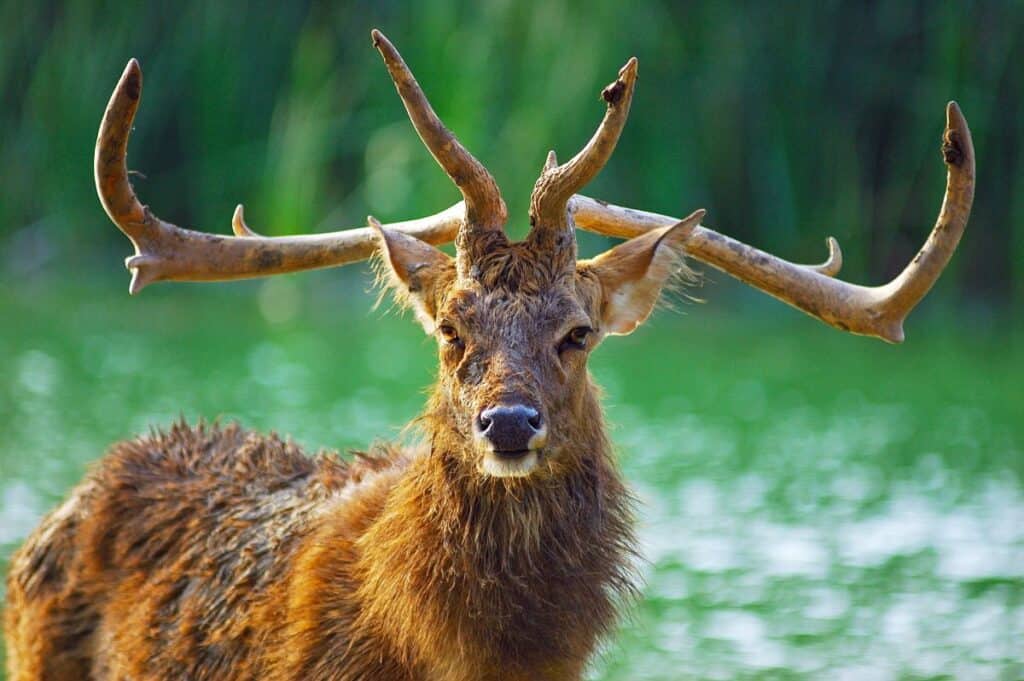
Hunting
Hunting proves to be a grave threat to the Eld’s Deer species. Hunters prize the unique deer since the towering, intricate antlers are in demand in local markets. The thick hydes on the deer also fetch a high price, also leading to the demand.
Aside from aesthetics, the species is also hunted for food. Eld’s Deer is a prized game meat that is considered a delicacy in Southeast Asia, which has also led to dwindling population numbers over time.
Development and Deforestation
You can also attribute the decline of the deer species to the massive development of infrastructure. The industrial boom in Southeast Asia has taken away prime grazing land, leaving very little habitat left for the Eld’s Deer.
Farming is another reason for the endangerment status; the growing demand for food in the region has transformed forests into rice paddies.
Estimated Population
While there isn’t an exact count of remaining Eld’s Deer, there are current estimates of populations in given areas. In Cambodia, it’s estimated that there are 700 individual Eld’s Deer left. In Myanmar, that number is even less at just 100 estimated deer remaining.
The Eld’s Deer is currently classified as Endangered on the IUCN Red List, due to all the above factors.
Conservation Efforts
Despite ongoing threats to the Eld’s Deer, it’s not all doom and gloom. You’ll be relieved to learn about the various conservation efforts put in place to protect the endangered species.
The WWF chapter in Laos is currently working with local governments to educate on land use planning. The goal is to factor in this endangered species when making important decisions regarding infrastructure and farming.
The environmental group has also set up a local-led sanctuary to ensure the protection of the local deer species. You can find this sanctuary in the Lower Mekong Dry Forests, which forms the largest area of dry forest remaining in Southeast Asia.

A Rare and Beautiful Deer
Eld’s Deer is an endangered species well-known for its statuesque size and distinguished antlers. If you ever get a rare chance to see this deer up close, you’ll be in for one unforgettable experience.
If you’re curious about different species of deer, be sure to check out our Deer Resources page.

